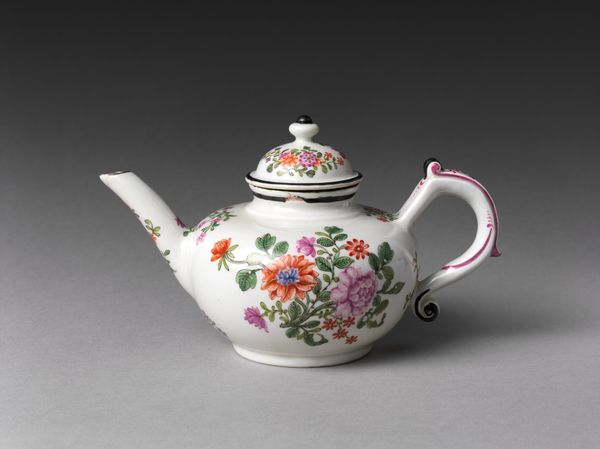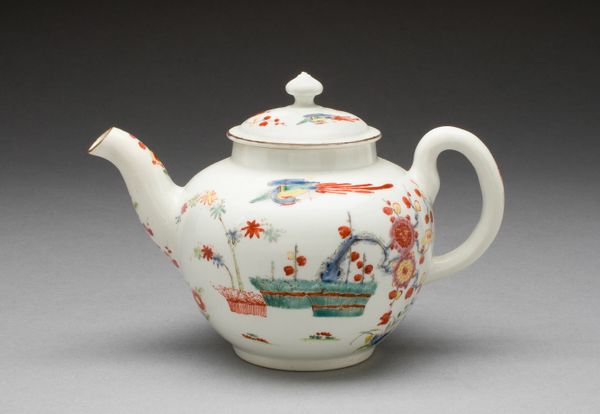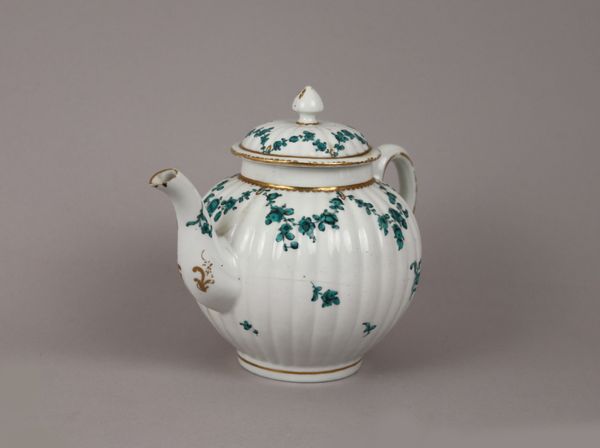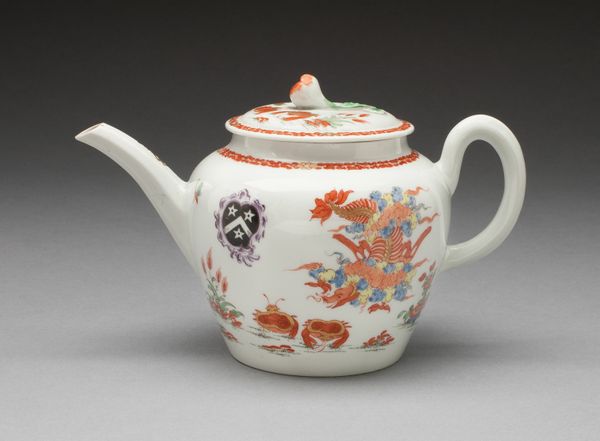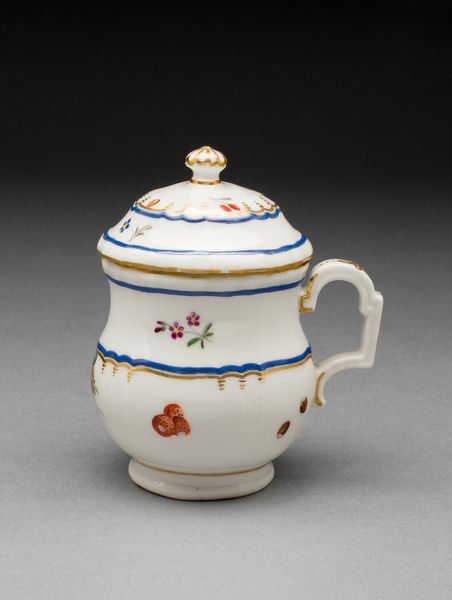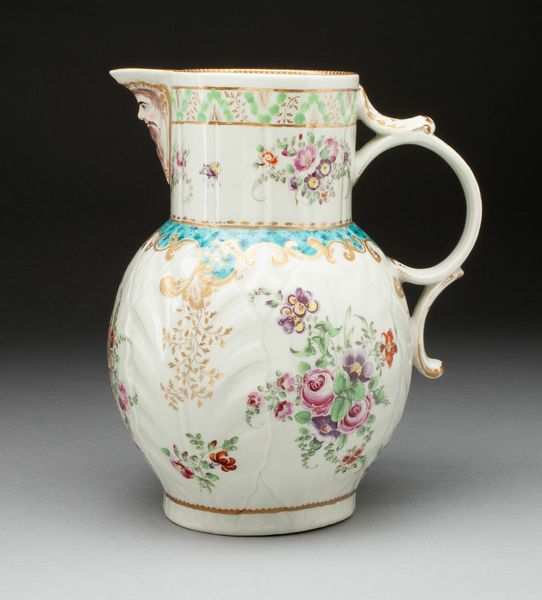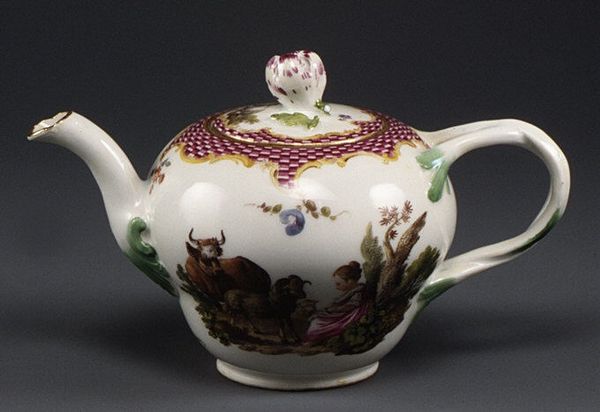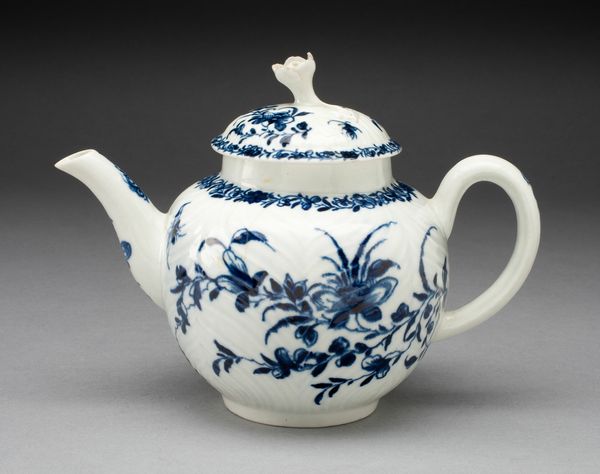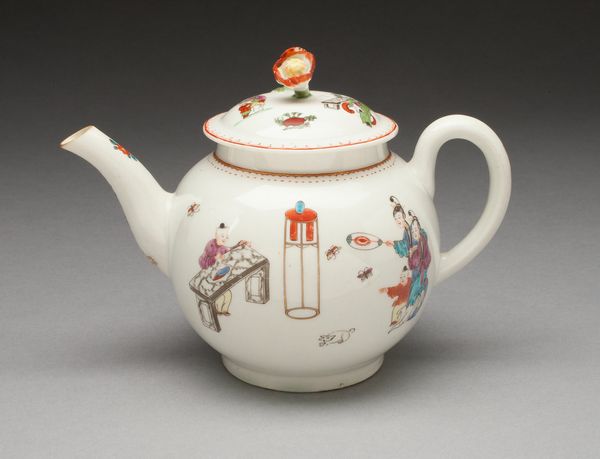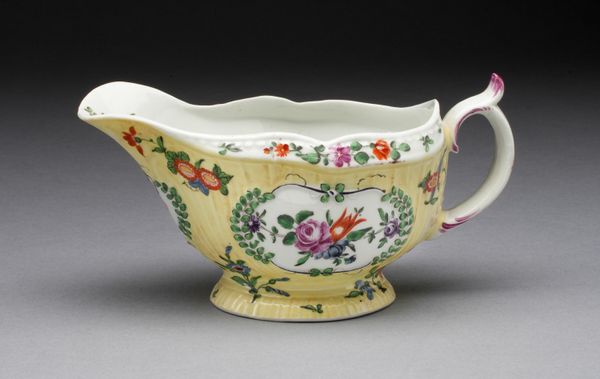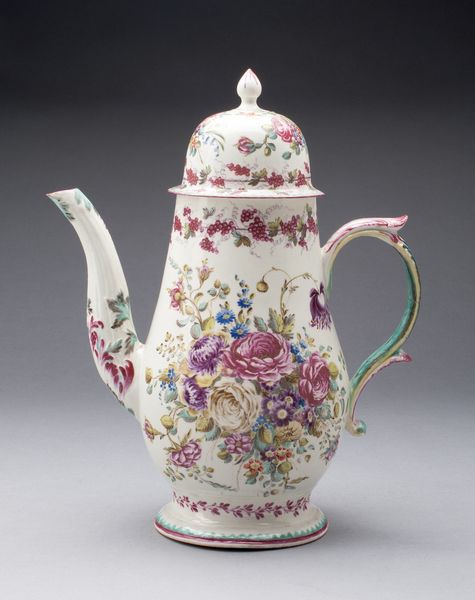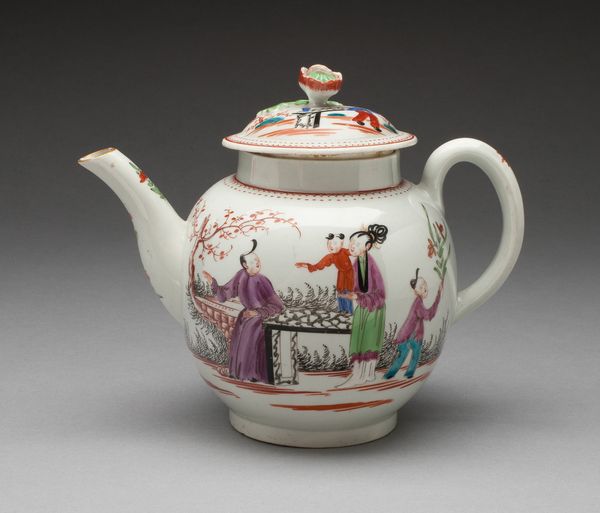
ceramic, porcelain
#
ceramic
#
porcelain
#
decorative-art
#
rococo
Dimensions: H. 14 cm (5 1/2 in.)
Copyright: Public Domain
Curator: I am immediately struck by the delicate nature of this object; the translucence of the porcelain seems almost ethereal. Editor: That’s a beautiful observation. What we’re looking at here is a teapot crafted by the Worcester Royal Porcelain Company around 1770. It resides here at The Art Institute of Chicago. Curator: It exemplifies the Rococo style beautifully! The ornate floral decorations in red, green, and blue hues appear seamlessly applied to the teapot's surface. Editor: Rococo was a period defined by luxury, and it's vital to consider the context. This teapot would have graced the tables of the wealthy elite, an overt display of social status made possible by the exploitation of labor and resources from various corners of the world. Curator: Exactly! The specific kaolin clay used for porcelain, alongside firing techniques, indicates a high level of technical skill. What truly impresses me is how such delicate materials could be shaped into something so functional, and yet also so beautiful. The floral designs were likely printed via transfer printing, and then overpainted, meaning they were adapted to reflect contemporary trends and tastes, but it’s so carefully and artfully applied that the decoration feels like an intrinsic feature of the object itself. Editor: You're right, that aesthetic integration can’t be overlooked. When viewing such pieces today, it's critical that we consider the politics embedded within the object, alongside issues such as colonization, trade routes, and labor conditions. Those elements inform what this piece symbolized historically. Even appreciating its craft and aesthetic qualities today requires us to grapple with the circumstances that brought this luxurious artwork into existence. Curator: Absolutely, because considering the cultural origins of these objects helps broaden our understanding of technique, production, and craftsmanship through that broader social and material network. It transforms an otherwise ‘decorative’ piece into something deeply significant. Editor: Agreed. Thinking through that complexity creates opportunities for a rich interpretation of these art objects. Curator: Absolutely.
Comments
No comments
Be the first to comment and join the conversation on the ultimate creative platform.
